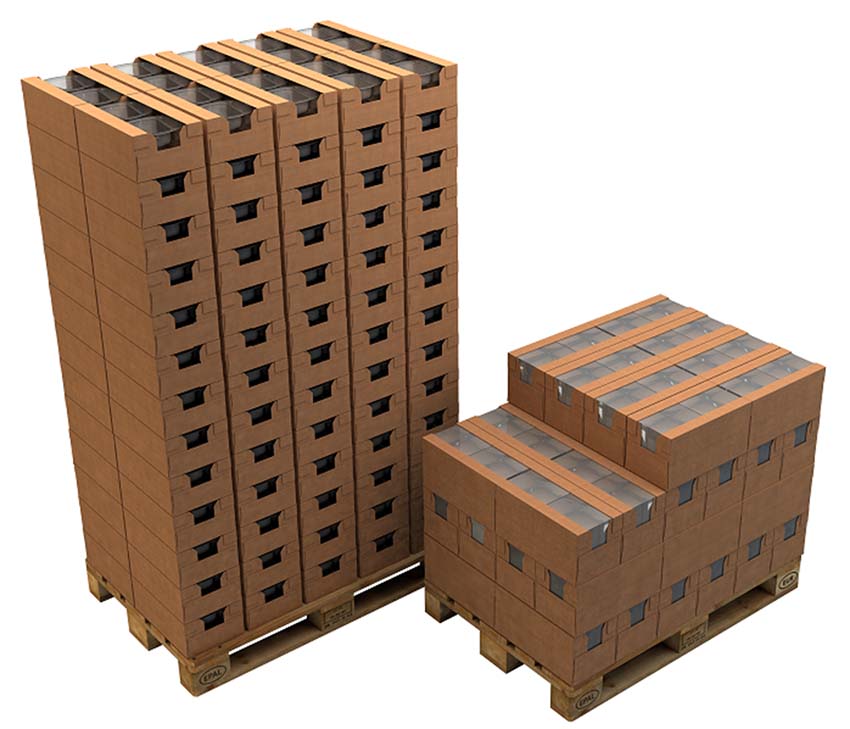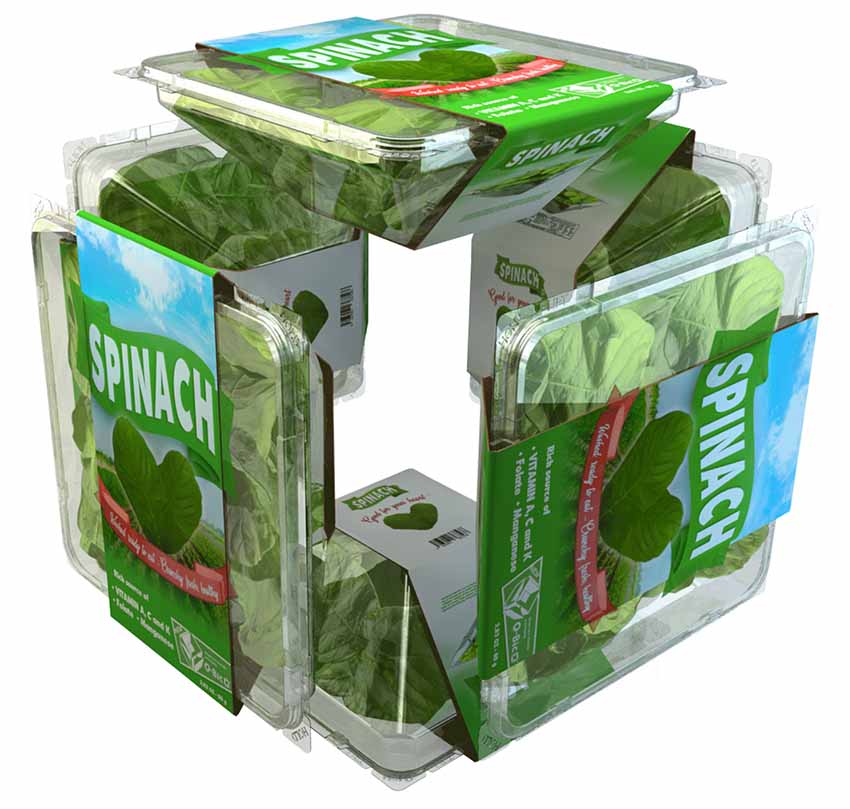Smart Packaging Industries (SPI) is the global distributor of the patented Q-Bic® concept, which is fully owned by SPI Holding through the ownership of patents and copyrights. SPI is the global distributor of Q-Bic® with offices in Norway, Germany, and USA.
Interview with Bjørn Sloreby, General Manager Europe at Smart Packaging Industries.
Easy Engineering: A brief description of the company and its activities.
Bjørn Sloreby: Q-Bic® is a unique patented packaging concept featuring a cube assembled from six individual pyramid-shaped trays. Less than 10% air within a cube ensures from 40% to more than 140% additional products per pallet, substantially reducing freight and logistical costs, packaging material, energy consumption and CO2. When we calculate savings for selected brands and products with large volumes, we see cost savings and emission cuts that are of a magnitude that cannot be ignored.
SPI and Q-Bic® are still in a start-up phase but has recently had an important breakthrough in both North America and Europe, with first orders for trays and clamshells for large producers in the vegetables and berries category.
E.E: What are the main areas of activity of the company?
B.S: Packaging design for food in different materials is our main area of activity and having patented our Q-Bic® concept in most markets globally, our business model is to create revenue from a minor part of what producers and brand owners save by using our smarter packaging design. The cut in CO2 emissions (direct and indirect) is a pure bonus but will have significant environmental and thus business value for our customers. We envisage deriving our income from the packaging production itself – by a few cents per unit, and this will represent a minor part of the savings we achieve for producers and brand owners.

E.E: What’s the news about new products?
B.S: All our packaging design follows the same principle of a unique patented concept branded Q-Bic®, featuring a cube assembled from six individual pyramid-shaped trays. After test shipments of berries, we have improved air flow channels between the clamshells, between the D-package/cardboard boxes and inside the individual clamshells.
Presenting the benefits of the Q-Bic® packaging design for several global brands we have recently had important breakthroughs in both North America and Europe:
In North America we have delivered several hundred thousand trays and sealing equipment for a salad producer in Canada. The salads are being packed and distributed to retailers and stores during Q4-22.
For Europe and Norway, we last month received the first order for clamshells for blueberries for a global player in berry production, sales, and distribution.
E.E: What are the ranges of products?
B.S: Individual Q-Bic® trays come in a variety of sizes and chamber configurations. The one thing that always stays the same is the unique configuration of six individual trays assembling to a cube.
Q-Bic® is Material Neutral and we can deliver most materials:
- PET variants: PE, PP, PS/EPS
- Paper: PET-coated paperboard, PP-paper hybrid, moulded paper pulp
- Metal: Wrinkle- and smooth wall, ALU-foil, or stainless steel
- Other: Moulded wood sheets, glass, from moulded straw etc.
Within food, our smart packaging can be utilized in most product categories: Vegetables and berries, Pâté, Yoghurt & Fruit-Puree, Porridge, Cut- and Processed Fruit, Pet Food, Crackers & Nuts, Ice cream – and so on.
The smart cube of a 6-pack is also very suitable for consumers, taking up less space. From the shopping basket, during home transport and for storage in cabinets, fridges, and freezers.
Regarding size, we have seen that the most suitable cup size is up to 24 cm on the cubes. With this size, we will cover most categories and needs that can benefit from our patented design. On request, we can of course also make larger sizes, but then you will no longer achieve optimal packing on pallets and will consequently approach more bulk.

E.E: At what stage is the market where you are currently active?
B.S: The market for our Q-Bic® patent is still at an early stage, but we see a different focus recently and producers and brand owners realize they need to change the way they think and act regarding packaging. They will need to invest to adjust their production lines to the Q-Bic® design, but for most producers and brand owners this will be a minor investment compared to the long-term benefits with reduced costs, reduced emissions, and improved logistics.
Increased costs related to shipping, energy related to production and cooling as well as increased costs related to packaging are all factors that have influenced manufacturers and brand owners to seek alternatives, and smarter packaging design is a low-hanging fruit that can quickly pay off.
E.E: What can you tell us about market trends?
B.S: In developed markets the trend is shifting from a wait-and-see attitude to a more proactive attitude where manufacturers and brand owners realize they must innovate and take action to cut costs and emissions associated with packaging design. There is also a growing awareness among consumers that brand owners and manufacturers must take greater responsibility for acting more environmentally conscious, including measures in packaging design.
The EU has intensified the fight against excess packaging and, in a recently published regulation, proposes several measures to reduce packaging waste and give the packaging a longer life.
The aim is for all EU countries to reduce packaging to the minimum, and the regulation contains requirements and rules with three different ambitions:
- The amount of packaging must be reduced, among other things through better design.
- The packaging is to a greater extent produced with recycled materials.
- More packaging must be recycled.
Furthermore, there will be requirements with LESS AIR IN THE PACKAGE: One of the requirements from the commission is that limits must be set for how much void space the packaging can contain. This should both reduce the amount of packaging, but also reduce the need for transport – and is obviously a perfect match with our Q-Bic® patent.
The goal in EU, is to reduce the amount of waste from packaging by 5% by 2030 and 15% by 2040. By 2030, all packaging must be able to be recycled.

E.E: What are the most innovative products marketed?
B.S: SPI has developed and patented the most logistical effective packaging design for Consumer Packaging Goods and our Q-Bic® patent is an innovation on how to use a cube assembled from six individual pyramid-shaped trays to avoid shipping of air, with virtually unlimited possibilities.
Q-Bic®’ s solid structure reduces waste and damaged goods since forces are displaced evenly in all axes and the solid multipack structure reduces, and in some instances eliminates the need for D Pack.
Thus, Q-Bic® contributes to dramatic reduction of harmful emissions and costs through the supply chain.
E.E: What estimations do you have for the rest of 2022?
B.S: For 2022 we aim to finalize distribution of our first salad trays in North America and to start the production of our first clamshell order for blueberries.
For 2023, we have high ambitions and expectations for the second half of the year, and we expect to enter into agreements with significant players in both North America and Europe. We expect exponential growth towards and through 2024 and beyond.

